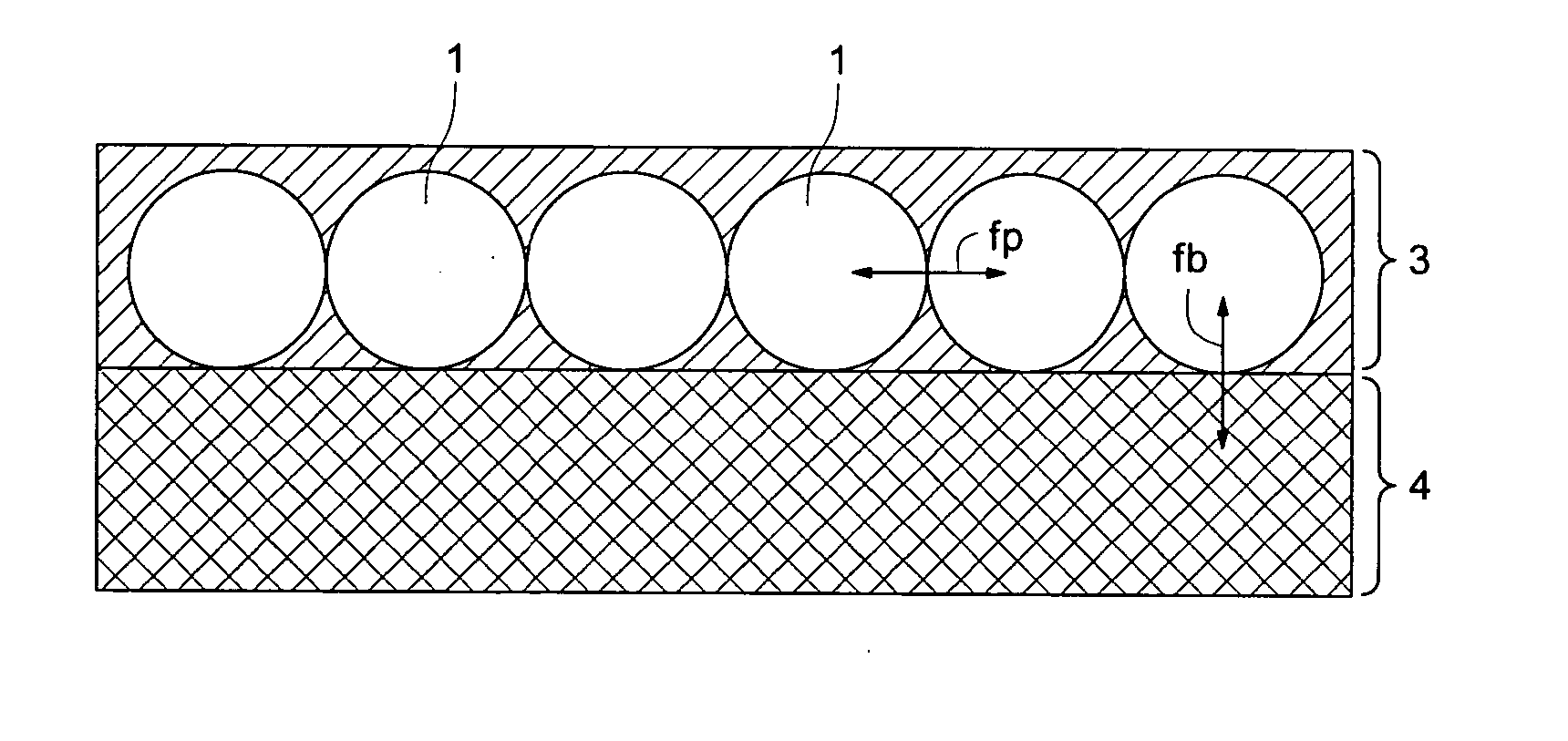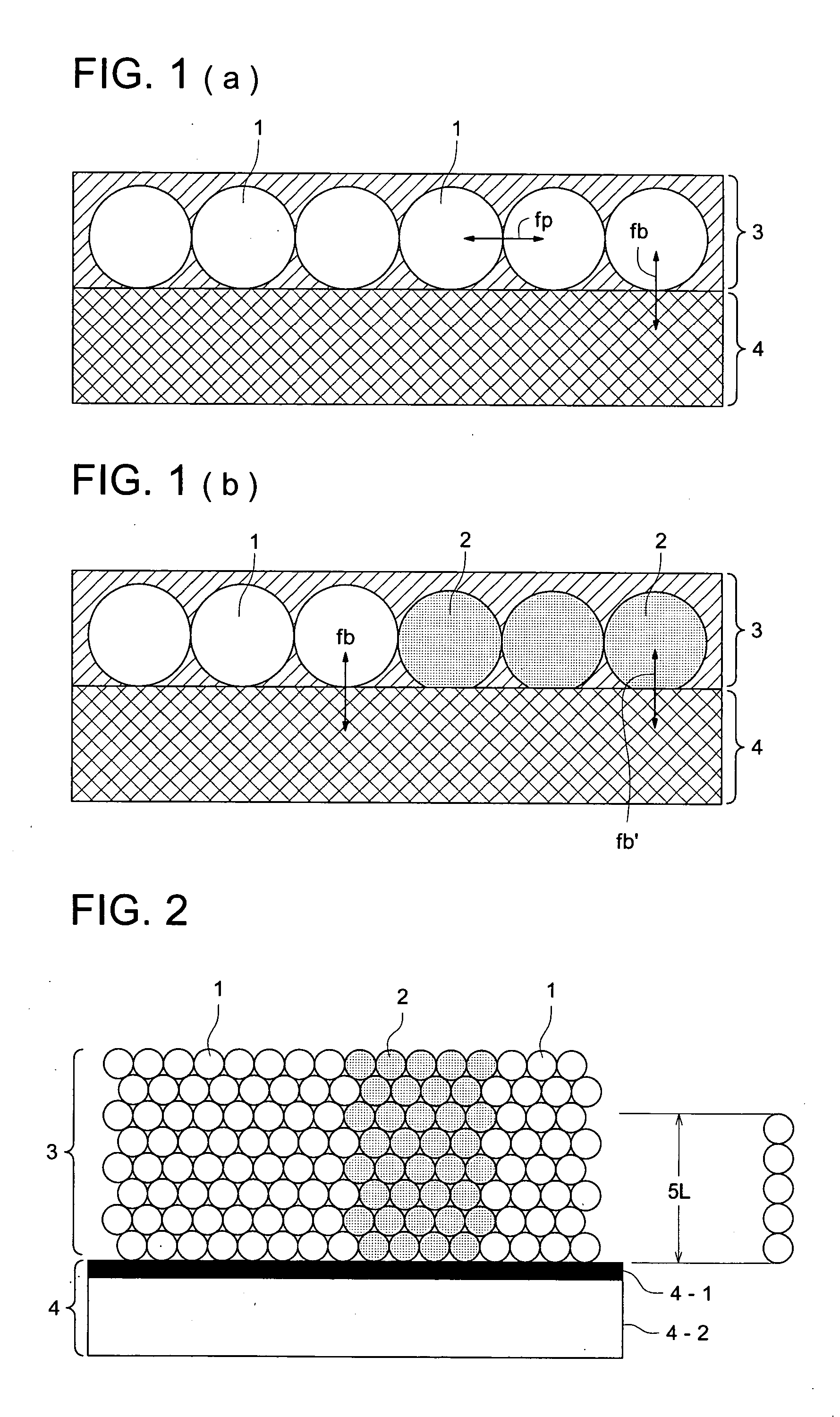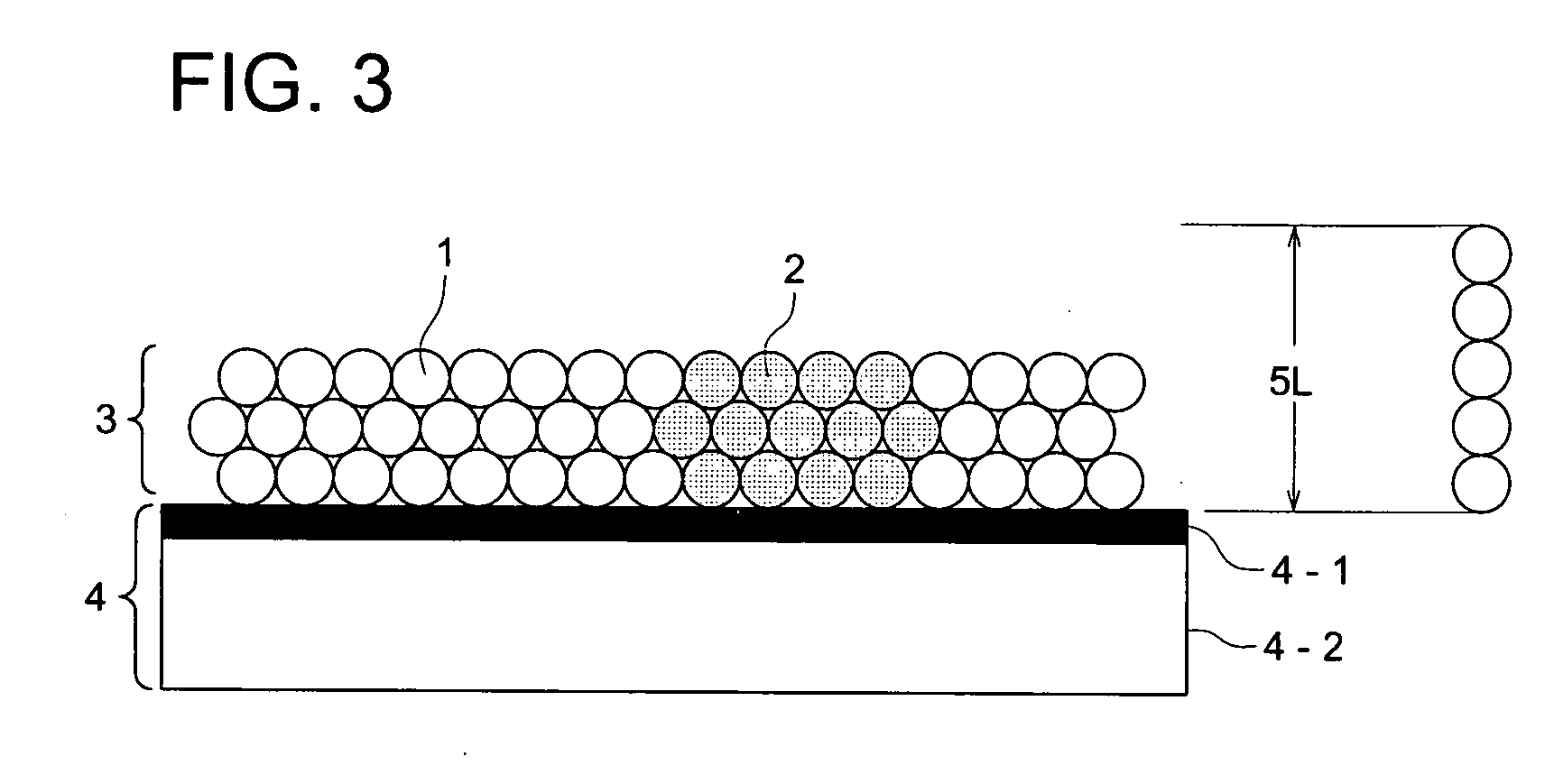Printing plate material
- Summary
- Abstract
- Description
- Claims
- Application Information
AI Technical Summary
Benefits of technology
Problems solved by technology
Method used
Image
Examples
example 1
Preparation of Support 1
[0129] A 0.24 mm thick aluminum plate (material 1050, refining H16) was immersed in an aqueous 1% by weight sodium hydroxide solution at 50° C. to give an aluminum dissolution amount of 2 g / m2, washed with water, immersed in an aqueous 0.1% by weight hydrochloric acid solution at 0.25° C. for 30 seconds to neutralize, and then washed with water.
[0130] Subsequently, the aluminum plate was subjected to an electrolytic surface-roughening treatment in an electrolytic solution containing 10 g / liter of hydrochloric acid and 0.5 g / liter of aluminum at a peak current density of 50 A / dm2 employing an alternating current with a sine waveform, in which the distance between the plate surface and the electrode was 10 mm. The electrolytic surface-roughening treatment was divided into 12 treatments, in which the quantity of electricity used in one treatment (at a positive polarity) was 40 C / dm2, and the total quantity of electricity used (at a positive polarity) was 480 C...
example 2
Preparation of Hydrophilic Support 2
[0155] The support 1 obtained above was immersed in an aqueous 0.1% by weight ammonium acetate (produced by Kanto Kagaku Co., Ltd.) solution at 80° C. for 30 seconds with stirring, washed with water, dried, then immersed in an aqueous 0.1% by weight carboxymethylcellulose 1150 (produced by Daicel Kagaku Co., Ltd.) solution at 80° C. for 30 seconds with stirring, washed with water, and dried. Thus, a support with a hydrophilic layer (a hydrophilic support 2) was obtained.
Preparation of Printing Plate Material Samples 9 through 15
[0156] Printing plate material samples 9 through 15 were prepared in the same manner as in planographic printing plate material sample 3, except that the following image formation layer coating solution (2) composition as shown in Table 5 was coated on the hydrophilic support 2 and dried to form an image formation layer having each component content as shown in Table 6 of the composition. In the above, drying temperatur...
example 3
[0161] Printing plate material samples 16 through 23 were prepared in the same manner as in printing plate material sample. 3 of Example 1, except that the image formation layer thickness was changed to those as shown in Table 8. The resulting samples were evaluated in the same manner as in Example 1. The results are shown in Table 8. The thickness of the image formation layer was measured from a section of the samples employing an electron microscope. The average particle size L of Vylonal PMD-1200 used as thermoplastic resin particles was 0.15 μm.
TABLE 8ImageformationOn-pressAnti-stain propertyDotResistancelayerdevelop-at non-imagequalitytoSamplethicknessabilityportions (number)at imageblanketPrintingNo.(μm)(number)100th5,000th10,000th15,000th20,000thportionscontaminationdurability160.210AAAAAAA20,000(Inv.)or more170.310AAAAAAA20,000(Inv.)or more180.410AAAAAAA20,000(Inv.)or more190.510AAAAAAA20,000(Inv.)or more200.610AAAAAAA20,000(Inv.)or more210.710AAAAAAA20,000(Inv.)or more220...
PUM
| Property | Measurement | Unit |
|---|---|---|
| Length | aaaaa | aaaaa |
| Percent by mass | aaaaa | aaaaa |
| Percent by mass | aaaaa | aaaaa |
Abstract
Description
Claims
Application Information
 Login to View More
Login to View More - R&D
- Intellectual Property
- Life Sciences
- Materials
- Tech Scout
- Unparalleled Data Quality
- Higher Quality Content
- 60% Fewer Hallucinations
Browse by: Latest US Patents, China's latest patents, Technical Efficacy Thesaurus, Application Domain, Technology Topic, Popular Technical Reports.
© 2025 PatSnap. All rights reserved.Legal|Privacy policy|Modern Slavery Act Transparency Statement|Sitemap|About US| Contact US: help@patsnap.com



